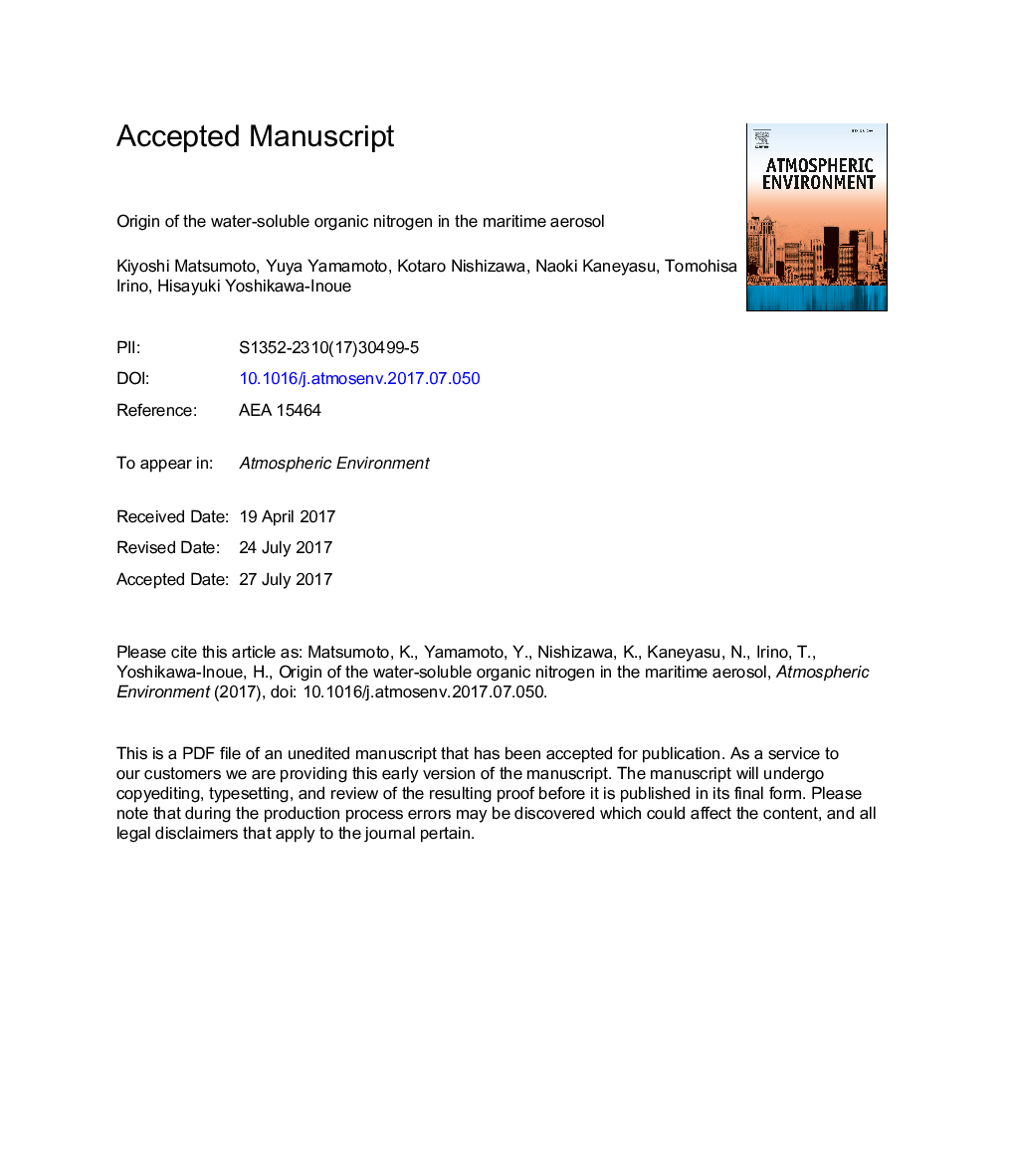| Article ID | Journal | Published Year | Pages | File Type |
|---|---|---|---|---|
| 5753054 | Atmospheric Environment | 2017 | 27 Pages |
Abstract
In order to clarify the production process for the particulate WSON in the maritime atmosphere, measurements of the WSON and the associated species in the aerosols were conducted at the coastal site on Rishiri Island near the northern tip of Japan. The mean concentration of the WSON in the aerosols was 0.077 μg mâ3, which was within the previous measurements from the remote or rural clean sites. The WSON accounted for about 13% of the WSTN in the aerosols, and about 90% of the WSON was detected in the fine-mode range (d < 2 μm). The WSON in both mode ranges was not associated with the air mass origin. The fine-mode WSON was correlated with nss-SO42- whether nss-SO42- was derived from anthropogenic or marine biogenic sources, suggesting that the WSON in the fine-mode range would be produced by the secondary processes in the acid particulate phase. EC and nss-K+, on the other hand, were not associated with the WSON in the fine-mode range, suggesting that the primary emissions from fossil fuel and/or biomass combustion are not important sources for the WSON. The coarse-mode WSON was not associated with any species. Negligible influence of dust particles and plant debris on coarse particle would cause very low concentrations of the WSON in the coarse-mode range.
Related Topics
Physical Sciences and Engineering
Earth and Planetary Sciences
Atmospheric Science
Authors
Kiyoshi Matsumoto, Yuya Yamamoto, Kotaro Nishizawa, Naoki Kaneyasu, Tomohisa Irino, Hisayuki Yoshikawa-Inoue,
